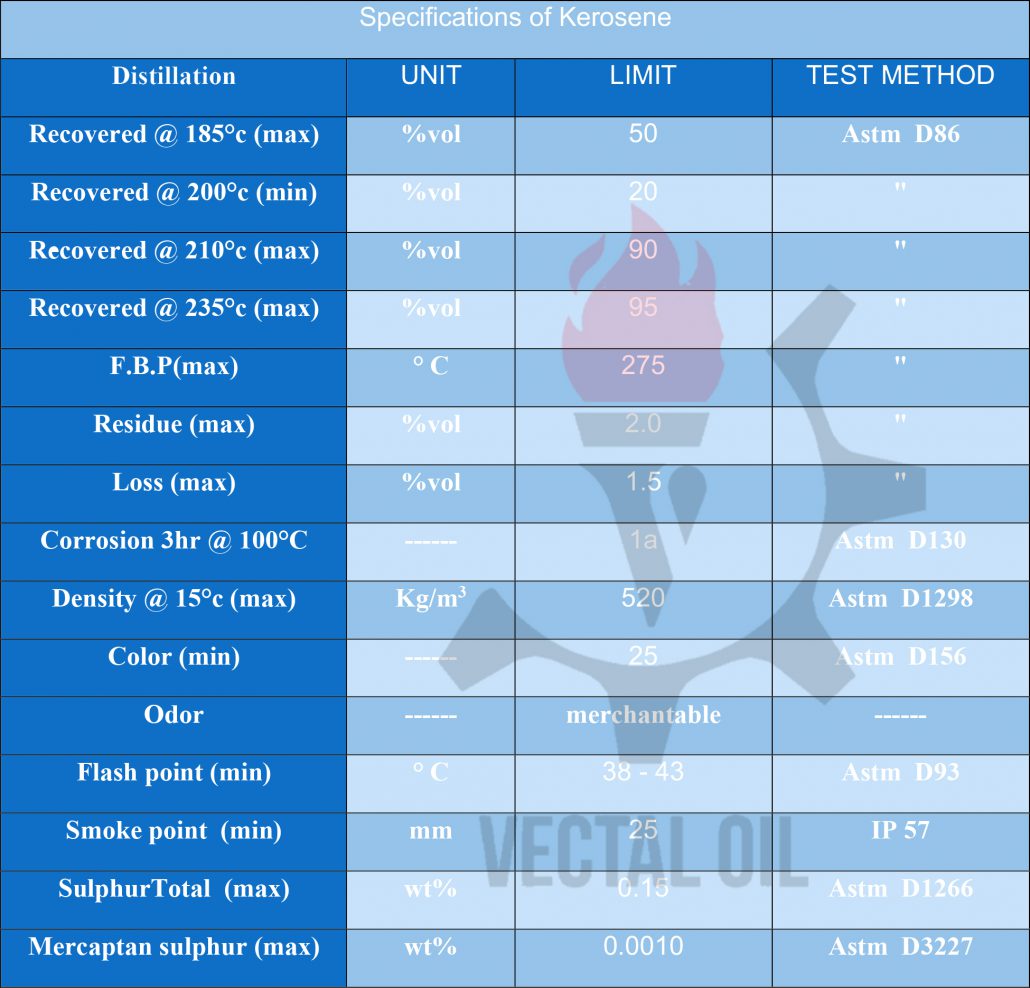Vestibulum curae torquent diam diam commodo parturient penatibus nunc dui adipiscing convallis bulum parturient suspendisse parturient a.Parturient in parturient scelerisque nibh lectus quam a natoque adipiscing a vestibulum hendrerit et pharetra fames nunc natoque dui.
Kerosene
$0.00
Kerosene, also known as paraffin, lamp oil, and coal oil (an obsolete term), is a combustible hydrocarbon liquid which is derived from petroleum. It is widely used as a fuel in aviation as well as households. Its name derives from Greek: κηρός (keros) meaning “ wax“, and was registered as a trademark by Canadian geologist and inventor Abraham Gesner in 1854 before evolving into a genericized trademark. It is sometimes spelled kerosine in scientific and industrial usage.
Categories: Kerosene, Oil & Gas, Oil Derivation
Reviews (0)
Be the first to review “Kerosene” Cancel reply
Shipping & Delivery 



MAECENAS IACULIS
ADIPISCING CONVALLIS BULUM
- Vestibulum penatibus nunc dui adipiscing convallis bulum parturient suspendisse.
- Abitur parturient praesent lectus quam a natoque adipiscing a vestibulum hendre.
- Diam parturient dictumst parturient scelerisque nibh lectus.
Scelerisque adipiscing bibendum sem vestibulum et in a a a purus lectus faucibus lobortis tincidunt purus lectus nisl class eros.Condimentum a et ullamcorper dictumst mus et tristique elementum nam inceptos hac parturient scelerisque vestibulum amet elit ut volutpat.
Related products
Jet fuel
$0.00
This fuel in terms Of distillation range, is very similar to kerosene. The fuel is produced by appropriate additives, refining and treatments. Because of high flash point (More Than 40 Degrees Celsius), it is acceptable to use it in turbine engines of airplanes. This fuel is also called “Jet A-1”. Lead-Free Paraffin (Or Jet A) is similar to gasoil and it’s possible to Use it not only in jet motors but also in diesel motors.
MDI
$0.00
Gas Oil-Gas Oil10000 ppm
$0.00
Gasoil (French: Gasoil) or petroleum gas or diesel fuel (French: Diésel) is used as fuel for diesel engines and thermal installations. Its hydrocarbon range is between C14-C20 and even C25 with a boiling point range of 385-250 degrees Celsius. Petroleum gas mainly consists of three groups of paraffinic, naphthenic and aromatic, has a minimum flash point of 54 ° C and a maximum pour point of 0 ° C.
Ammonium chloride(industrial grade)
$0.00
Ammonium chloride, abbreviated as ammonium chloride. It refers to the ammonium salt of hydrochloric acid, which is mostly a by-product of the alkali industry. Containing 24%~26% of nitrogen, it is white or slightly yellow square or octahedral small crystal. It has two dosage forms of powder and granular. Granular ammonium chloride is not easy to absorb moisture and easy to store, while powdered ammonium chloride is used more. Basic fertilizer for the production of compound fertilizer
NAPHTHA (C5+)
$0.00
DESCRIPTION
Pentanes Plus is a complex mixture of C5 hydrocarbons rich in isopentane and pentane. This material is a colorless liquid with a gasoline-like odor. It is volatile (evaporates readily) and does not mix with water (negligible solubility). Pentanes Plus is recovered during the manufacture of benzene from pyrolysis gasoline (pygas).Condensate-Natural Gas Condensate
$0.00
The natural gas condensate is also called condensate, or gas condensate, or sometimes natural gasoline because it contains hydrocarbons within the gasoline boiling range, and is also referred to by the shortened name condy by many workers on gas installations.In general, gas condensate has a specific gravity ranging from 0.5 to 0.8, and is composed of hydrocarbons such as propane, butane, pentane, and hexane. Natural gas compounds with more than two carbon atoms exist as liquids at ambient temperatures
Gasoil(Diesel Fuel)
$0.00
A middle distillate and form of heating oil, gasoil is primarily used in heating and air-conditioned systems. Gas oil is one of the most actively traded oil products, and comes between fuel oil and the lighter products such as naphtha and gasoline. In its broader definition, it covers the oil products used for diesel automotive fuel and jet fuel. Gas oil is also used in industries for various applications such as power generation or as a fuel in boilers, machinery and other applications is expected to fuel the demand for gas oil. Growth in disposable income along with increasing number of vehicle especially in the Asia Pacific is expected to upsurge the demand for the gasoil.
Crude oil
$0.00
Petroleum, also known as crude oil and oil, is a naturally occurring, yellowish-black liquid found in geological formations beneath the Earth's surface. It is commonly refined into various types of fuels. Petroleum consists basically of compounds of only two elements, carbon and hydrogen. Because these elements combine in a large variety of complex ways, however, crude oils vary greatly in their chemical composition. Their physical properties such as color, specific gravity, and viscosity also vary widely.





















Reviews
There are no reviews yet.